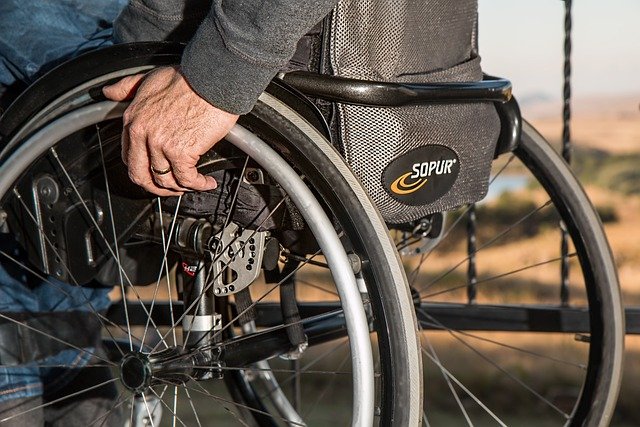Understanding Electric Trikes for Seniors: How They Support Mobility and Independence
In recent years, electric trikes have emerged as a popular and practical solution for seniors seeking to maintain their mobility and independence. As the population ages, the demand for transportation options that cater specifically to the needs of older adults has grown significantly. Electric trikes, with their stability, ease of use, and environmentally friendly design, are quickly becoming a favored choice among seniors.

As the population ages and more seniors seek ways to remain active and independent, electric tricycles have emerged as a practical solution that bridges the gap between walking and driving. These innovative vehicles provide the stability that many older adults need while offering the freedom to travel longer distances without excessive physical strain.
What Makes Electric Tricycle Options Ideal for Older Adults
Electric tricycles differ significantly from traditional bicycles in their design and functionality. The three-wheel configuration eliminates the balance requirements that can become challenging as people age, while the electric motor assistance reduces the physical effort needed for pedaling. This combination allows seniors to enjoy cycling even if they have concerns about stability or limited physical strength. The low step-through frames common in senior-focused models make mounting and dismounting easier, while the comfortable seating position reduces strain on the back and joints.
Key Features of Electric Trike Adult Models
Modern electric tricycles designed for adults incorporate numerous features that enhance safety and comfort. Most models include adjustable seats with back support, easy-to-reach handlebars, and intuitive control systems for the electric assistance. Safety features often include LED lighting systems, reflective materials, and sometimes even turn signals. The cargo capacity varies significantly between models, with some offering rear baskets or storage compartments that make them practical for errands and shopping trips. Battery life typically ranges from 20 to 50 miles per charge, depending on the level of assistance used and terrain conditions.
Finding Electric Trikes for Sale: What to Consider
When shopping for an electric tricycle, several factors should influence the decision. Weight capacity is crucial, as models vary in their ability to support different body weights and cargo loads. The motor power, typically measured in watts, determines how much assistance the bike provides on hills and against headwinds. Battery type and capacity affect both range and charging time, with lithium-ion batteries generally offering better performance and longevity. Local dealers often provide test rides and after-sales service, which can be valuable for seniors who may need ongoing support or maintenance.
Health and Independence Benefits
Electric tricycles offer numerous health advantages for seniors beyond simple transportation. The pedaling motion, even with electric assistance, provides cardiovascular exercise and helps maintain leg strength and joint mobility. The outdoor activity can improve mental health and provide social opportunities when riding in groups or to community events. Perhaps most importantly, these vehicles help seniors maintain their independence by providing a reliable means of transportation for errands, medical appointments, and social activities without relying on others or public transportation.
Comparing Popular Electric Tricycle Options
| Model | Manufacturer | Key Features | Price Range |
|---|---|---|---|
| Schwinn Meridian | Schwinn | 26-inch wheels, rear basket, 7-speed | $1,500 - $2,000 |
| AddMotor Motan M-350 | AddMotor | 750W motor, fat tires, 55-mile range | $2,200 - $2,800 |
| eWheels EW-29 | eWheels | 500W motor, reverse function, LED lights | $1,800 - $2,400 |
| Razor EcoSmart Metro | Razor | Bamboo deck, 500W motor, removable battery | $800 - $1,200 |
| Worksman Port-o-Trike | Worksman | Heavy-duty frame, 500lb capacity, customizable | $2,500 - $3,500 |
Prices, rates, or cost estimates mentioned in this article are based on the latest available information but may change over time. Independent research is advised before making financial decisions.
Safety Considerations and Best Practices
While electric tricycles are generally safer than traditional bicycles due to their stability, seniors should still take precautions when riding. Wearing a helmet is essential, even though it may not be legally required in all areas. Understanding local traffic laws regarding electric vehicles is important, as regulations vary by state and municipality. Many seniors benefit from taking a safety course or practicing in safe, controlled environments before venturing into traffic. Regular maintenance checks, particularly of the brakes, tires, and electrical systems, help ensure safe operation and extend the vehicle’s lifespan.
Electric tricycles represent a significant opportunity for seniors to maintain their mobility and independence while staying active and engaged with their communities. As technology continues to improve and prices become more accessible, these vehicles are likely to play an increasingly important role in senior transportation solutions. The combination of stability, electric assistance, and practical features makes them an excellent choice for older adults looking to enhance their quality of life and maintain their freedom of movement.



